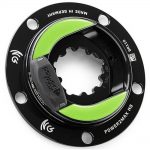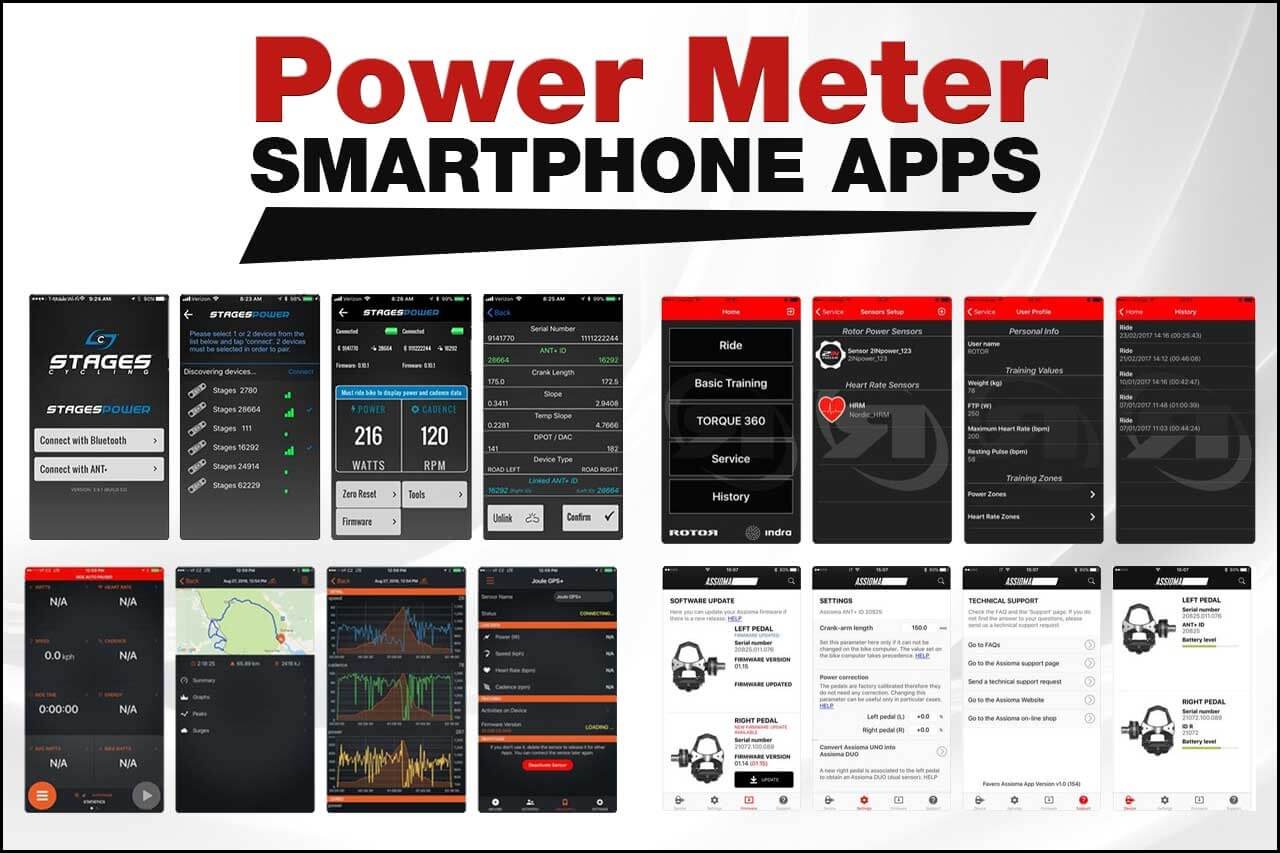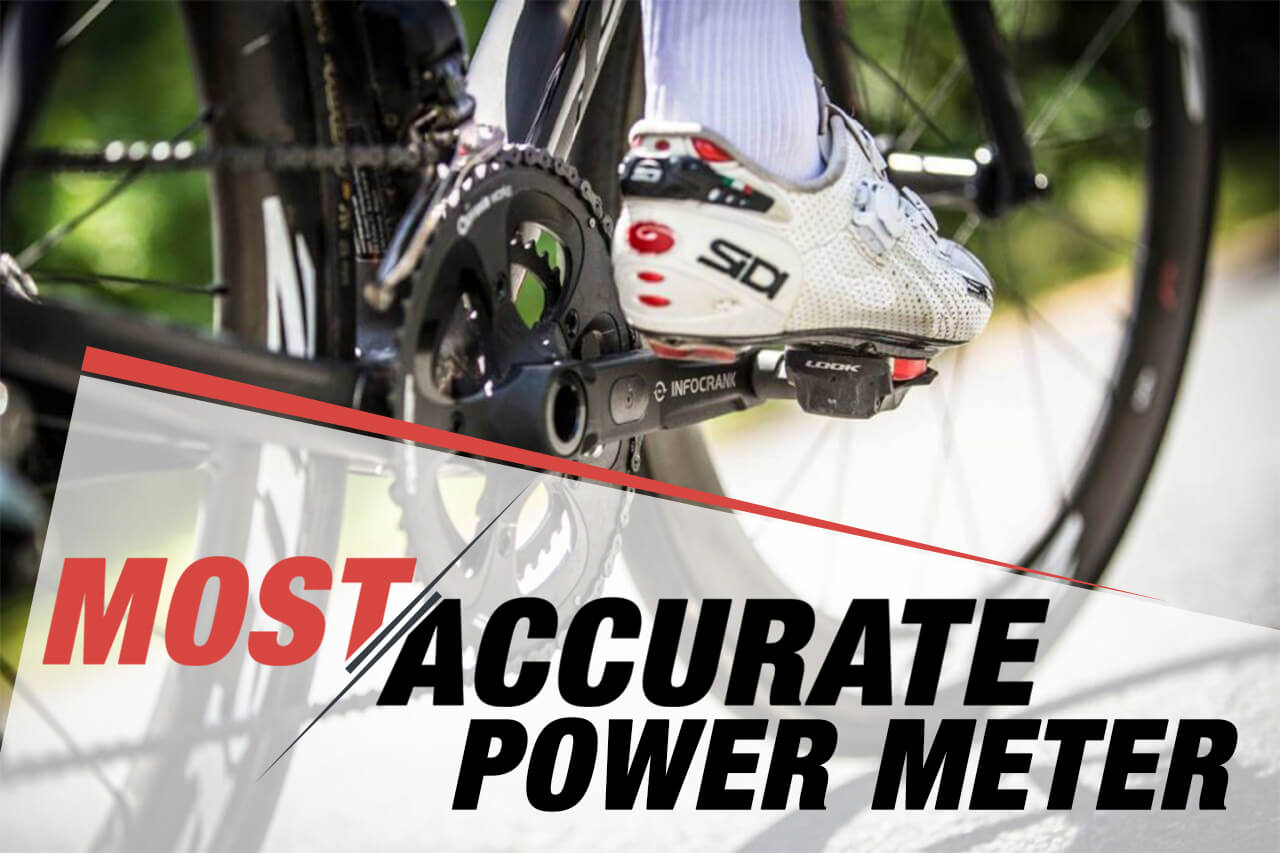Oval chainrings have been around for many years in various forms and configurations. The concept is simple enough. Oval chainrings aim to minimize the “dead spot” in the pedal stroke and lengthen the power phase. The result, according to proponents of oval rings, is a more efficient and powerful pedal stroke. However, there is a long running debate in the cycling community regarding power meters and oval chainrings. The question is, to what extent, if any, do oval chainrings impact power meter accuracy. So if you’re a fan of oval chainrings and you train with power, this article is for you.
Oval Chainrings
With a standard round chairing, when your feet come across 6 and 12 o’clock during your pedal stroke, your power drops significantly. Oval chainrings, also called non-round or elliptical rings, are shaped in a manner as to minimize this dead spot. The non-round shape means your pedal stroke passes through this dead spot more quickly. Moreover, the non-round shape emphasizes 3 and 9 o’clock, your power position. This allows you to produce maximum power there. By allowing the legs to do work where they are at their strongest, and less where they are at their weakest, the theory is you will have a more efficient, powerful pedal stoke.
The majority of oval rings have a relative difference of about 10% from the strong spot to the weak spot. For example, a 53-tooth ring feels like a 58-tooth in the power phase, and a 48-tooth in the dead spot.
ROTOR DM 1X Road Oval Ring

absolute BLACK Oval Ring

Do They Work?
While not the subject of this article, I felt compelled to at least touch on this (somewhat hotly debated) topic. Researchers have examined both the physiological and performance differences between oval and round rings on several occasions. Some reports conclude that oval rings are indeed effective. Furthermore, numerous professional riders including elite cyclists such as Bradly Wiggins and Chris Froome have used oval rings. (Chris Froome still does and swears by them.) Surely they know something…right? On the contrary, you can find reports and studies that don’t show any real performance gains. Likewise, it’s easy to find someone who has used oval rings and has found their way back to round rings.
It’s probably fair to say, if they help, the gains are marginal. But this is a sport that is all about marginal gains…so that’s not a put-down. Ultimately, you need to give them a try and decide for yourself. Remember, it’s not always a clear-cut ‘they work or they don’t’ situation. What works for one, might not work for another and vice-versa. In addition, it’s all about how you feel and rider preference. If oval rings feel better and more natural to you, use them. If not, don’t. Lastly, it has been theorized that oval chainrings may be more helpful to the amateur cyclist. Why? Because professional cyclists already have very efficient pedal strokes with minimal dead-spots.
Power Meters and Oval Chainrings: Are they Compatible?
Here’s the concern: most power meters make the assumption that your pedaling velocity is constant. In other words, power meters assume that you turn the pedals at steady speed throughout each pedal stroke revolution. The problem is, oval chainrings cause your crank velocity to change during each pedal stroke, as they limit the time in the dead spot and lengthen the time in the power phase, as discussed above.
Indeed, most studies conclude that because of the change in crank velocity, oval rings do influence the accuracy of power meters. More specifically, they cause your power numbers to be inflated. The more non-round your chainring is, the greater the impact on the accuracy of your data. Studies say you can expect an increase in your power readings of anywhere from 1% to 4%.
The Counter Argument
However, there are those who say this is not the case. Rather that power meters and oval chainrings don’t skew or inflate your power data. Take the folks at SRM for example.
“We have had an increasing number of customers use Q-rings with their SRM Power Meter. There is no difference in wattage accuracy between using a regular chain ring or an elliptical chain ring. The important thing is that the SRM power meter is calibrated with a regular round chain ring to determine the slope of the power meter, which is exclusive to that power meter. Once this is determined, any type of chain ring can be used and wattage accuracy is maintained. Think of it in these terms, the elliptical chain ring only adds more leverage. This in turn can allow for more torque per pedal revolution. This is no more different than changing the crank arm length, which has no effect on the accuracy of the power meter. Torque is torque…”
Our Take
Both of these arguments seem valid. We’re not engineers and we don’t pretend to have exceptional insight into the inner workings of power meters when used with oval chainrings. We can only go off of what the experts in this field say, and clearly there is a difference of opinion. What we can say is that, while we acknowledge the potential for inflated power numbers, we don’t feel it is a major cause for concern.
Why? Because if an oval ring indeed results in inflated power numbers, the difference is likely to be slight (unless you’re using highly ovalized rings). In addition, remember that perhaps more important than accuracy, is consistency. If your power meter gives you consistent power data day-in and day-out, then it’s largely irrelevant if it reads 204 watts when you are actually producing 200. We think that if you are more comfortable with oval rings on your bike, then go for it. Just keep in mind the impact your oval rings might have on your power numbers.
Power Meter Specific Notes
4iiii Innovations
4iiii states that due to the changes in velocity, oval chainrings will indeed result in a measurement error on 4iiii power meters. They further note that the error induced by oval chainrings will depend on the ovality of the chainring, but estimates you could experience a 1-4% over-estimation of power. Please note that while you can run an oval ring on a 4iiii left side power meter (as the ring will bolt on the Shimano drive side crank like normal), most oval rings do not fit 4iiii dual-side crankset. This is due to the location of the battery and sensor on the 4iiii drive side crank which interferes with the oval ring.
Favero Assioma
The Favero Assioma uses IAV Power Technology (Actual Instantaneous Angular Velocity) to correct for any inconsistencies in pedal speed. IAV allows the Assioma DUO and UNO to measure the true pedaling speed within each pedal stroke. This eliminates the issue of inconsistent pedal stroke revolutions caused by oval rings. Perhaps even better, IAV also improves the accuracy of the Assioma to +/-1.0%.
Garmin Rally
Garmin states the following regarding the Garmin Rally: “[The pedals] assume constant angular velocity within a single crank revolution. For most riding conditions and bike set-ups, this assumption allows the Rally systems to report power within its stated accuracy. Garmin has not determined how variable the angular velocity is when using the elliptical rings in real riding conditions. Because of this, we are unable to state what impact would appear on power values. For the best accuracy, it is advised that when using a Rally system, it should be installed on a circular ring set.”
This is just a thorough way of saying they cannot attest to what impact, if any, oval rings might have on accuracy. I would suspect that the impact with Garmin Rally’s wouldn’t be much different than that with any other power meter. In fact, we have a customer that has compared their Rally’s with a Q-Ring to a PowerTap G3 hub. He reports that the difference was negligible.
power2max
power2max power meters are claimed accurate with oval rings by the manufacturer. Specifically, power2max says the cadence interval on their power meters is not discrete per crank revolution. Rather, the accelerometer data is sampled continuously, just like power data. In other words, they don’t make the assumption that pedaling velocity is constant and therefore, are not impacted by the use of oval rings.
ROTOR 2INpower DM
There’s no crankset-based power meter more Q-Ring compatible than the ROTOR 2INpower DM Power Meter. Not only is the ROTOR 2INpower certified accurate with a Q-Ring, but ROTOR power meters feature OCP (Optimal Chainring Position) technology. This allows you to adjust your Q-Ring position with a great degree of precision. By fine-tuning the position of your Q-Ring, you can set your pedal stroke to best take advantage of your Q-Rings and get the most power and pedal efficiency out of your crank.
Stages Cycling
Mechanically, the Stages power meter works with oval chainrings. However, they note that their power measurement is “event based, where as an event is one complete pedal revolution”. Like Garmin, due to the angular velocity inherent in oval rings, they note that power will likely be skewed higher. They estimate it can be as much as 4-5% higher. They emphasize that it is indeed fine to use oval rings with a Stages power meter. However the rider simply needs to take this difference into account when using their Stages power meter with an oval chainring.

 Stages Shimano GRX RX810 Power Meter
Stages Shimano GRX RX810 Power Meter  power2max NGeco SRAM Road Power Meter
power2max NGeco SRAM Road Power Meter  SRAM X0 Eagle AXS Transmission Left Arm Spindle Power Meter
SRAM X0 Eagle AXS Transmission Left Arm Spindle Power Meter 



